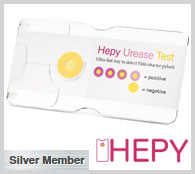Portable Diagnostic Tool Uses Bioluminescence to Detect Viruses at POC
Posted on 30 May 2025
Point-of-care diagnostics have become crucial tools in many households, enabling individuals to measure blood sugar, conduct pregnancy tests, and even perform their own COVID-19 assays. These diagnostics allow people to avoid the need for costly and time-consuming laboratory testing, making them vital for disease detection, treatment, and monitoring. However, current diagnostics often suffer from issues such as inaccuracy and poor sensitivity.
Bioluminescence has the potential to address common problems experienced by other diagnostic methods, including background noise, false positives, photobleaching, and phototoxicity. By using the same natural enzyme that causes fireflies to glow, bioluminescence can illuminate biological samples for imaging. The enzyme luciferase is added to the sample to detect viral particles, and luciferin molecules are introduced to trigger a luciferase reaction that produces a burst of light. However, this reaction typically results in a weak and short-lived light signal. Now, researchers have developed a rapid, portable, and highly sensitive diagnostic tool that generates bioluminescence signals 500 times stronger and 8 times longer-lasting than previous diagnostic tools, overcoming the current limitations of point-of-care diagnostics.

The Luminescence Cascade-based Sensor (LUCAS), developed by researchers at Mass General Brigham (Boston, MA, USA), addresses the shortcomings of current diagnostic methods and more accurately detects SARS-CoV-2, HIV, HBV, and HCV in patient samples. The team designed a novel enzyme signal cascade to amplify and extend the bioluminescence signals. By adding beta-galactosidase, an enzyme that binds to luciferin and continuously releases it, the system enhances the reaction, as opposed to allowing luciferin to float freely for a single reaction. This extra step results in more luciferin, more luciferase reactions, and consequently, more bioluminescence. As a result, LUCAS is 515 times more bioluminescent than non-LUCAS systems, with its signals maintaining 96% of their strength after an hour.
To assess the effectiveness of LUCAS, the research team tested 177 viral-spiked patient samples and 130 viral-spiked serum samples infected with SARS-CoV-2, HIV, HBV, or HCV. The SARS-CoV-2 samples were collected via nasopharyngeal swabs, while HIV, HBV, and HCV samples were obtained from blood draws. The study, published in Nature Biomedical Engineering, revealed that LUCAS provided diagnostic results within 23 minutes, with an average accuracy of over 94% across all pathogens. The researchers designed LUCAS to be both portable and user-friendly, making it suitable for use in a variety of healthcare settings, from well-resourced hospitals to low-resource point-of-care environments. The next steps for the team include testing LUCAS’ performance with other biological fluids and exploring its ability to detect multiple pathogens simultaneously. As biomarkers for diseases like Alzheimer’s continue to evolve, having a tool like LUCAS ready for new biomarkers could prove invaluable in the coming years.
“Developing effective diagnostics is incredibly challenging, especially when you think about the size of infectious disease particles and the complicated biological fluids we’re attempting to identify them in. Finding an HIV particle in a human blood sample is like finding an ice cube in a jelly-filled Olympic swimming pool while blindfolded,” said senior author Hadi Shafiee, PhD, a faculty member in the Division of Engineering in Medicine and Renal Division of Medicine at Brigham and Women’s Hospital, a founding member of the Mass General Brigham healthcare system. “With its novel enzyme cascade approach, LUCAS marks a substantial leap forward for sensing viruses in these complex biological samples.”




 assay.jpg)









